“Lavande de Provence” – Flower Bath Salts
Original price was: € 11.00.€ 5.50Current price is: € 5.50.
Sacred bathing or dipping in water for sacred reasons, transformation, cleansing, blessing and even baptism have been practiced all over the world from antiquity to modern day. Each culture has its own mythos, folklore and practices surrounding the sacredness of water.
FLORAL + CLENSE + BATH SALTS
Dead Sea Bath Salts “Lavande de Provence” for a mystical ritual bath time.
Ingredients:
• Dead Sea Salt
• French Lavender
• Rose Buds
• Sage Herb
• Sweet Mint
• Malva Flowers
Enough for one strong or two relaxing baths. One single glass tube size is 16 cm, weighting 30 gr or 7 ounces. Each tube cork is encapsulated with hot wax and wrapped in biodegradable material.
Dead Sea Salt
The Dead Sea is a landlocked salt lake bordered by Jordan to the east and Israel and Palestine to the west. With 34.2% salinity, it is one of the world’s saltiest bodies of water, rivalled only by hyper-saline lakes in Antarctica, Djibouti, and The Caspian Sea. Documented origins of Dead Sea salt being used for health and therapeutic properties can be traced as far back as biblical times. According to the Book of Samuel, King Solomon presented the Queen of Sheba with Dead Sea salts as a gift when she visited the Holy Land.
The Dead Sea Salt contains 10X more minerals than normal sea salt, with more than 20 minerals including calcium, magnesium, iodine, zinc, potassium, and sodium. These minerals enrich the ingredient with therapeutic properties that do wonders for your skin without the use of harmful chemicals. Minerals which can assist in cleansing, detoxifying, and restoring a healthy status quo to the body, especially the skin and muscles include:
Magnesium – Magnesium is great for detoxifying and cleansing the epidermis. It promotes the cell metabolism, and in turn helps heal damaged or inflamed skin.
Calcium – Calcium also promotes skin growth and regeneration, moisture retention through the production of sebum, and stimulates the production of antioxidants.
Sodium – Sodium helps cleanse and exfoliate the skin, neutralise free radicals which can degenerate skin cells, and relieve sore muscles.
Zinc – Zinc also helps heal and rejuvenate skin, ward off acne, and protects the skin’s lipids and fibroblasts cells that create collagen.
Potassium – Potassium is great for keeping skin moist and plump, and for reducing puffiness.
Sulphur – Sulphur helps decongest pores. It also has powerful healing, antifungal, antimicrobial, and antibacterial propoerties.
The calcium present in Dead Sea salt has the ability to clean pores, so that dirt, grime, and oil do not clog them up. This makes it the perfect addition to your daily skincare regime especially if your skin is often exposed to the elements. Additionally, it can even protect the skin from windburn and sunburn due to its zinc content. The sulfur content of this natural skincare product can act as an effective cleanser that prevents your pores from clogging.
While allergies are often treated with medication and topical ointments, many people prefer to use natural remedies. Dead Sea salt addresses that concern as an allergy remedy, that is not only effective but also available naturally. The next time you have an allergic reaction, you could try applying some of it on your skin or simply soak in a Dead Sea salts bath.
Lavender – Lavande de Provence
The word comes from the Latin root lavare which means ‘to wash’ as the Romans used it to scent their bath water. Lavender is one of the most popular scents you can find and it’s used in tons of stuff, especially bath products. The oil is extracted from the fresh flowers of the lavender plant. It can help with stress, anxiety, insomnia, and help stabilize your mood.
In magic, lavender is associated with the planet Mercury and the element of Air and the Gods associated with it are: Mercury-Hermes and Hecate. Lavender is regarded as an aphrodisiac with magical powers.
Lavender resonates with the crown chakra. The gentleness of lavender encourages compassion while helping to soothe deep sadness. Lavender conjures feelings of balance and emotional well being.
Malva Flowers – Common Mallow (Malva sylvestris)
The leaves and flower buds of the Common Mallow contain mucus, tannins, flavonoids, essential oil, vitamin C and other substances. The anthocyanin glycoside malvin, a naturally occurring chemical, is only found in the flowers. Malva sylvestris flowers are known to soothe the respiratory system and have antioxidant and anti-inflammatory properties. It ‘s one of the herbs that are used in the practice of loving back and against evil eye. Malva also “was planted upon the graves of the ancients, stemming from the belief that the dead could feed on such perfect plants”.
The Greek philosopher, mystic, and mathematician, Pythagoras (570–495 BC), was said to prepare a meal including the leaves of mallow for hunger, and another preparation including mallow seeds for thirst when going on extended sojourns within shrines (Riedweg, Rendall, & Schatzmann, 2005).
Pliny the Elder held that simply sprinkling mallow seeds on to your genitalia would produce sexual desire to “an infinite degree” (Pliny, 1885). Mallow was eaten and ritualistically vomited by the Iroquois as a love medicine (Moerman, 2009).
Mallow was/is traditionally used as dermatological aid in the healing of sores and swellings by the Cherokee, Iroquois, Mahuna, Navaho, and Ramah peoples in various topical poultices and infusions (Moerman, 2009). Incredibly fond of “malache” as medicine, Pliny the Elder (23–79 A.D.) recommended a decoction of the root for dandruff, the warm juice of the plant to treat melancholy, and the leaves boiled as a potherb in milk to cure the common cough. Pliny also touted the plant’s action as a mild laxative (Pliny’s Natural History, pg. 284). The juice of mallow was said to have been used with oil to prevent hair loss (Tynan & Maitland, 1909). In Eastern Anatolia, Malva is traditionally used as a potherb and cure for stomach ache, diarrhea, and asthma (Türker & Dalar, 2013). Even when toasted as a tea, the slightly thick quality mallow leaves impart to water is soothing to sore throats during sickness. In Pakistan, ingesting the plant is thought to help with hemorrhoids (Khan et al., 2013), and pulverized mallow seeds are used to treat bladder ulcers and coughs (Aziz et al., 2016). Italians use the plant for tea to help with inflammation and as a “gargle,” presumably, t0 help with a sore throat (Pieroni & Giusti, 2009). The people of Turkey are reported to use mallow as a compress to promote the maturation of abscesses (Özgökçe & Özçelik, 2004).
Rose Buds – Rosa Gallica officinalis
Red Rose is a perennial flower shrub or vine of the genus Rosa, within the family Rosaceae. The symbol of rose is long known to attract love, abundance, money and promotes joy, happiness and alluring magnificent attraction to all light. It is symbol of beauty, youth and innocence. It is Venusian power of the rose, which is the Queen of the Garden, emits the highest frequencies. One does not have much more to wonder, why rose petals are commonly used on rituals and baths. The word rose simply means red or pink when translated from various languages including Greek, Polish and Roman. The medieval Christians contrasted he five petals in a rose to five wounds of Jesus, red rose’s symbolized blood shed by Christian martyrs. The magicians use Rose flowers and buds to make love charms and spells. One can also place the buds on an altar and pray for their love affairs.
Sage (Salvia officinalis)
Dried Sage has a powerful effect on the user’s mind. Not leaving behind the ancient wisdom on the positive powerful usage of the plant, scientific research and information have now informed its infamous properties. As early as the 1500s, rumor had it that sage was excellent for the head. The Spaniards named it the Salvia lavandulaefolia, that is the protector of the little messengers that transmit information in the brain. In fact, the scientist Culpeper wrote that the herb sage warms the brain and quickens the user’s senses, thereby healing their memory.
A frequent cup of steaming sage brew has been known to release inflammations and soreness in the respiratory tract. Even focusing on the adjacent gastrointestinal tract, sage has within it organic antioxidant compounds that boost metabolism and neutralize free radicals that invade the healthy cells of the body, causing diseases such as cancer.
On the subject of free radicals, the apigenin, rosmarinic and luteolin acid found in sage are the compounds that neutralize free radicals which are the
most and common causes of many chronic and degenerative conditions such as arthritis. Similarly, sage relieves inflammations related with the cardiovascular system due to excessive oxidation of the healthy cells.
Yes, sage can boost your immune. Most people assume that pathogens make entry into the body through the orifices we have, but the skin is also covered in little numerous ‘orifices’ called pores. The antimicrobial properties of sage inhibit viruses from making entry into the body through the skin.
Sweet Mint – Mentha
Mentha is a genus of plants in the family Lamiaceae (mint family). Regular use of this herb is very beneficial for asthma patients, as it is a good relaxant and relieves congestion. In a study of over 1,100 women in labor, peppermint aromatherapy caused significant reductions in nausea. As it cools and soothes the throat, nose and other respiratory channels, it also relieves the irritation which causes chronic coughing. This is the main reason why so many balms are based on mint. Mint has cooling effect, soothes the skin and helps cure infections and itchiness. Mentha is one of the witch herbs and is commonly use for many beneficial and healing rituals.
“The species, varieties, and sub-varieties of the genus Mentha are exceptionally numerous, and the various terms applied to them by the ancients can only in part be identified with any certainty. The basic term was Greek and Latin menta, which was not only used as a general term for mints, but sometimes denoted a specific kind according to a myth retold by Ovid ( 1 ), this name originated in the transformation of the nymph Menthe or Minthe into this plant by Proserpina. The explanation of Pliny (2) is less fanciful, but equally false. He says that the plant was originally called mintha by the Greeks, but because of the sweetness of its odor, the name was changed to mentha, the source of Latin menta. By this he clearly means that µ{1180. inevitably suggested ” dung,” and the incongruity of the association led to a change of spelling, since mint was fragrant (3). It was precisely this association which caused the scholiast to make a risible interpretation of a passage in Aristophanes (4). Actually is probably a loan word from some south European or Mediterranean source, and Latin menta was either borrowed from the Greek or acquired directly from the original source (5).”
Mint has been used medicinally since ancient times, and Pliny even advised scholars to wear a crown of mint to help concentration as it was thought to promote clear thinking. Mint tea has been used to aid digestion and even to battle the common cold. Fresh leaves from the plant have been used to ease skin burns because of their cooling effect. Mint essential oil, owing to its decongestant, antiseptic and anaesthetic effects, has been used externally to relieve colds, chest infections, headache, muscular pain, catarrh and asthma.
Bath Rituals
Sacred bathing or dipping in water for sacred reasons, transformation, cleansing, blessing and even baptism have been practiced all over the world from antiquity to modern day. Each culture has its own mythos, folklore and practices surrounding the sacredness of water.
A majority of cultures do agree that water is an agent of cleansing and spiritual purification; baths or using water to cleanse and purify is often part of rites of passage or can be part of a transition ceremony. Water can help remove toxic energies in the body, on objects, holy relics, and votive offerings. Water is often part of a religious ceremony and the water’s edge is a liminal space bridging the mundane and the otherworld together. H
As a yoga practitioner I incorporate at the very least two baths a month. One in conjunction with the full moon and one in conjunction with the dark moon. During this peak Moon phases, I do not practice yoga, or only yin yoga. For Moon Ritual, may I suggest the following: First always clean your Bath space properly and close your telephone. Connect and recharge with crystals; For Dark Moon, use the Smokey Crystal Quartz and for the Full Moon use the clear Quartz. Cleanse your space of negativity with Sage or Palo Santo; Take a floral or salt bath; Adorn your space with candles, flowers, and oracle symbols; Keep a journal to track your healing progress, as well as meditation and visualizing.
Connect to the Lunar light within, which activates and rises the river streams within the body. Embrace, let go and allow the flow to carry you on the stream of emotion. In the water we are save, back to the womb. Embrace the salt, the flowers, the candle light reflections. Play a music, read poetry, sing a song. May this water bathing time be like recharging, rebirth. Resonating with the weight of the body in the water, the ideas and thought start flowing easier.
After bath, rub from tip to toe with castor oil, avoiding only the eyes. Allow the oil to penetrate the skin for 10-20 minutes, until the body start cooling.
Take lemon based soap and rub off the oil from the skin and hair. Rinse with plenty of lukewarm water. Clean well with towel the bath, so it is not slippery and exit slowly. Bring your body to ready prepared rest room or bed and allow good one hour or over night rest. The castor oil works deeper under the skin tissue, ligaments and bones. It activates the musculature and warms deeply all the joints. It roots the energy and restarts the whole body, like a motor, which was oiled.
++++++++++++++++++ LEGAL STUFF ++++++++++++++++++
Although they may smell edible, our products are NOT for human consumption. FOR EXTERNAL USE ONLY. No liability will be assumed by OnçaRitualOfferings for any claims arising out of the misuse or otherwise of these items or any other product sold or made by OnçaRitualOfferings.
OnçaRitualOfferings products and statements have not been evaluated by the FDA. These products are not intended to diagnose, treat, cure, or prevent any disease. Nor is it intended to prescribe in any way.
Safety precautions : All products are for external use only. Keep away from eye area.
| Weight | 0.30 kg |
|---|---|
| Dimensions | 18 × 4 × 4 cm |







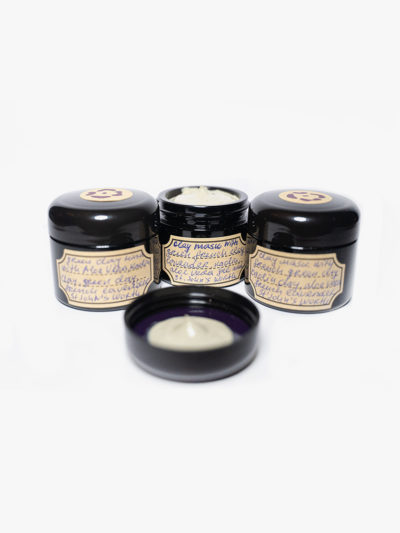
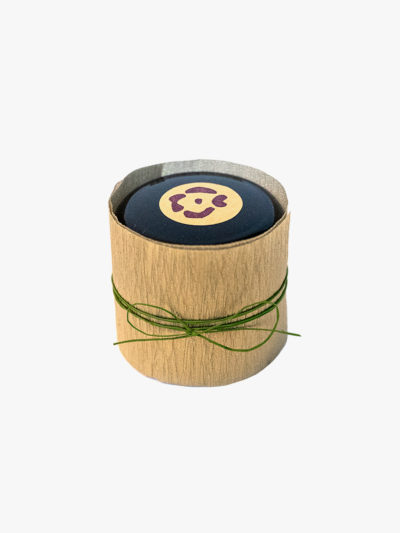






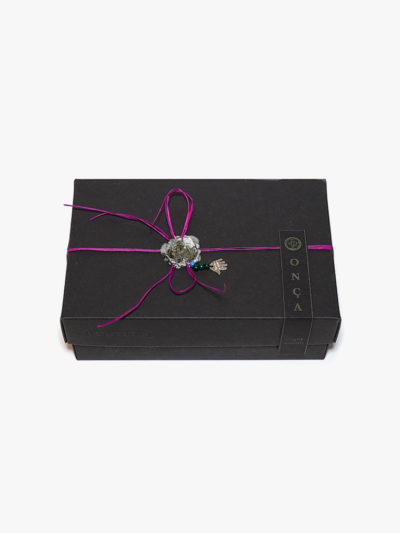

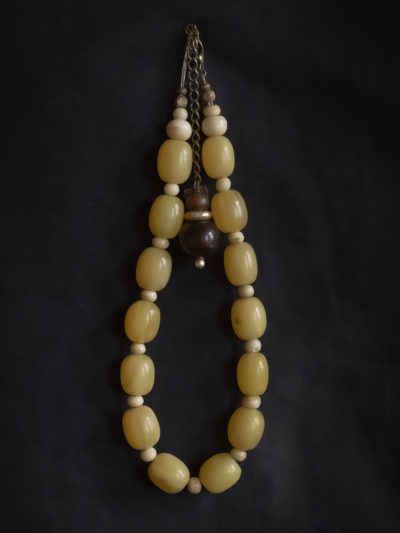



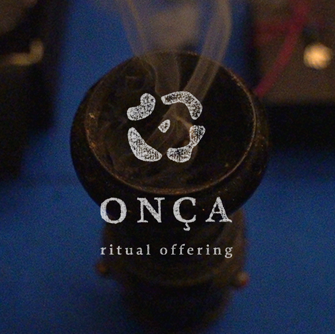



Reviews
There are no reviews yet.